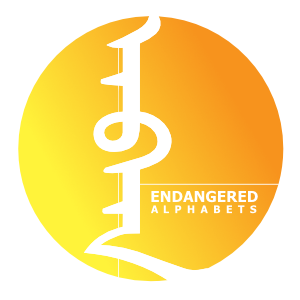Not a Polyglot but…a Polygraph?
The newest member of the far-flung EndangeredAlphabets family is a young man in Bangladesh who may well hold the world record for the number of scripts he can write, and write with accuracy and grace. That number is…
Wait for it….
342.
It says a great deal about the way we, especially those in the West, think about scripts that we have a word for someone who speaks many languages—a polyglot—but no word for someone who can write many scripts. I suppose such a person would, perhaps, be a polygraph, if that word hadn’t already been taken.
For us there are many languages, but (and this is the reason for the Endangered Alphabets Project’s existence) as far as we’re concerned there is only one alphabet, plus some other foreign writing like Arabic, Cyrillic, Chinese, Japanese, and probably other alphabets that don’t really count.
We are impressed by someone who is proficient in a dozen languages in the way that we’re impressed by someone who in proficient in a dozen sports, but it barely even occurs to us that someone who speaks, say, Russian, Arabic and Chinese has also learned to write in entirely different scripts that even progress across the age in different directions. Or that an educated person from South Asia, may routinely write in four or more scripts every day.
So it’s hard to describe in a word what Muhammad Saad Ahmed’s distinction is, or under what heading he might qualify for the Guinness Book of Records.
I’ll have to tell you in a sentence: Muhammad Saad Ahmed practices calligraphy in what must surely be a record number of different scripts: 342. Though he adds, modestly, he is fluent in only 86. Oh, and did I mention he’s only an undergraduate, at the University of Dhaka in Bangladesh?
He writes:
“My name is Saad. I was born on 12 July 2002 in Faridpur city of Bangladesh. My father is a teacher and my mother is a housewife. I’m a student of History of Art. I am very interested in different scripts. When I was little, I became interested in foreign scripts after seeing the Chinese written on the packaging of a Chinese company’s electronics. Due to my interest, many people helped me with different foreign books so that I could learn from those books. Now I can read and write many scripts include Egyptian hieroglyphics.”
He is quick to point out that he doesn’t speak all those languages—in fact, he sources his scripts from Simon Ager’s website Omniglot.com, so some are extinct, and some are conscripts. (Research for the Endangered Alphabets’ Red List Project estimates there are some 275 scripts currently in use in the world.)
But he can write their characters, and he can do so with the aesthetic commitment one would expect from a student of the history of art—not to mention a young man whose grandfather was a professional calligrapher for the British Raj.
Back in the day—his grandfather’s day, for example–people used to say “He/she has a beautiful hand,” meaning the writer had beautiful handwriting.
Muhammad Saad Ahmed, who may be a world record holder, has that increasingly rare skill, a beautiful hand.
Tim Brookes is the founder and executive director of the Endangered Alphabets Project, a non-profit dedicated to research, education and advocacy on behalf of minority and Indigenous writing systems and their cultures.
